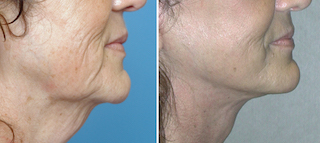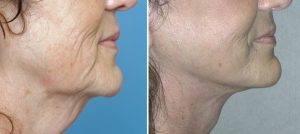Background: The well known facelift procedure is popular for one main reason….it is an anti-aging facial operation that just works. Having been widely practiced now for almost one hundred years it has stood the best of time in terms of appeal and effectiveness. While undergoing many technical and anatomic changes/improvements over the years, the conceptual backbone of the procedure remains largely the same.
Despite its effectiveness it is also a plastic surgery procedures that is frequently misunderstood. Between differences in techniques, methods by which it is performed and the marketing of it, it is prone to misconceptions and myths about it.
In its purest application its effects are limited to mostly the lower face (neck and jowls) with some potential modest benefits to the cheeks as well. It requires other ‘facelifting’ procedures to treat any area that lies above the lower eyelids. It does not have a central facial effect and will not eliminate the nasolabial folds, lift the corners of the mouth or get rid of/reduce lip wrinkles. It is not a permanent operation and starts to degrade six months or so after the operation with eventually having many patients return to close where they started. The question often asked is how long does it last and this answer depends on the age and natural genetics of the patient, what type of facelift procedure did they have, their lifestyle, and how one defines when they consider their face benefiting by more work. At best plastic surgeons can only give a range of facelift duration from 5 to 10 years.
Case Study: This middle aged female was retiring and moving out of state and wanted some facial rejuvenation before she left. This is always an opportune time to freshen up the face since most of the people in the new geographic location likely do to have a recall of the previous facial appearance.

The biggest fear of most facelift patients is that they will look unnatural and over done. While an understandable preoperative concern, that is really a very uncommon postoperative effect that has propagated by the celebrity magazines and news reports. For most patients they look natural fairly quickly and the plastic surgeon usually has the opposite concern…they want to do enough that the patient gets a good value and a lasting effect. Scars are another concern but most facelift incisions heal really well when well placed in and around the ears.
Case Highlights:
1) Loose skin from aging creates both sagging and extensive wrinkling in the face and neck.
2) The posterolateral tissue relocation in a lower facelift works out most of the sag and some but not all of the wrinkles.
3) Wrinkling will occur before tissue sagging after a facelift
Dr. Barry Eppley
Indianapolis, Indiana




